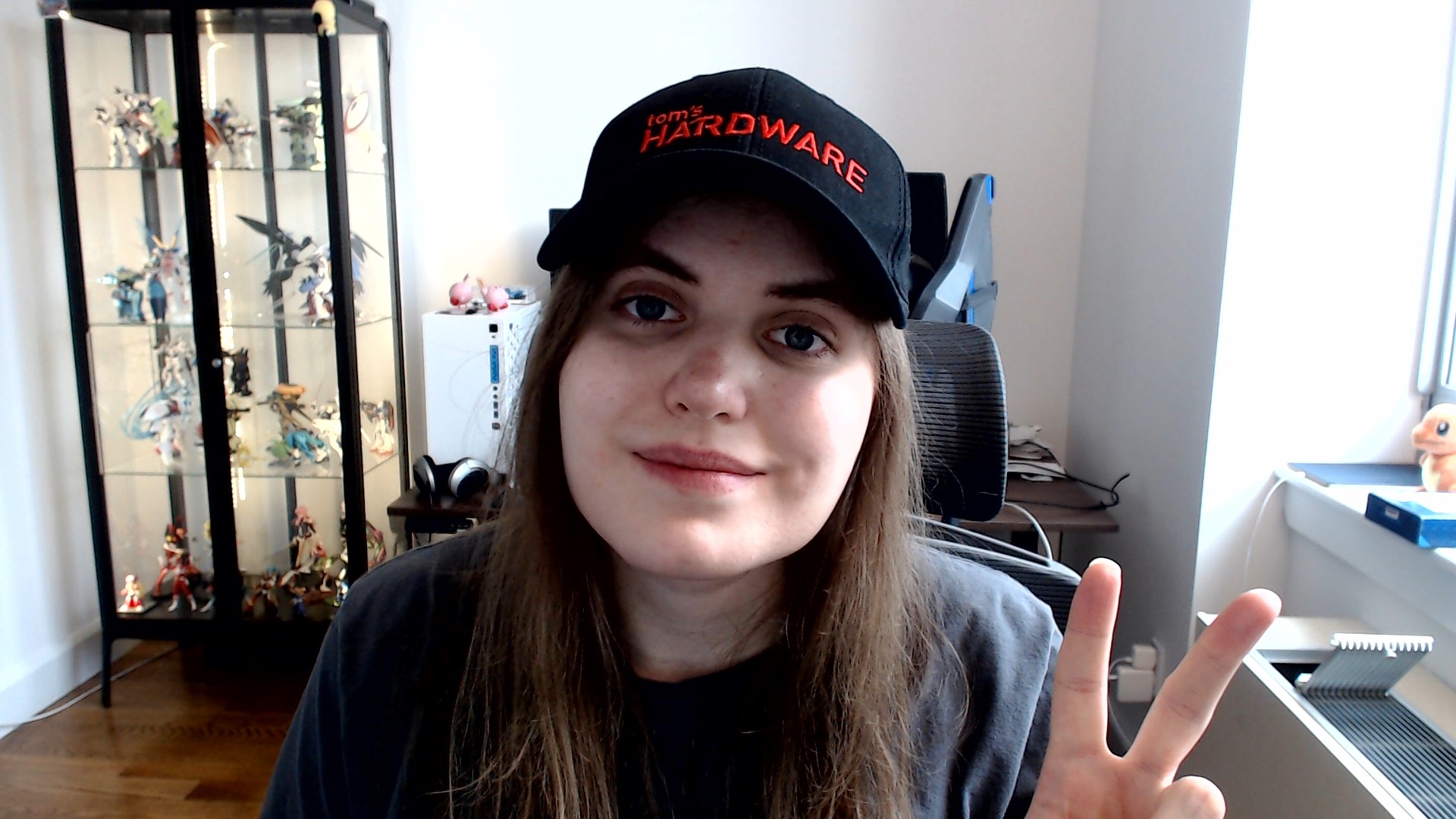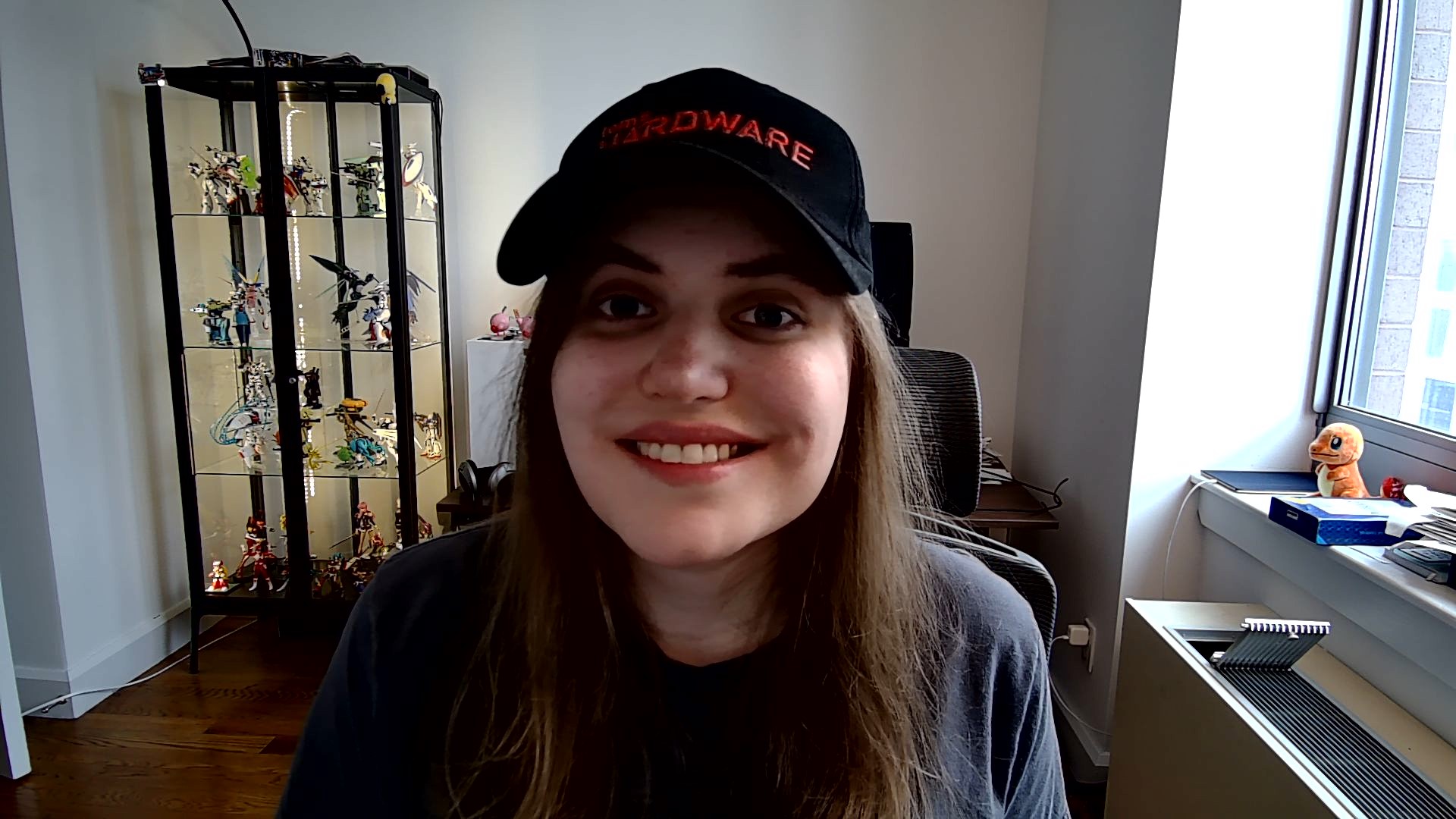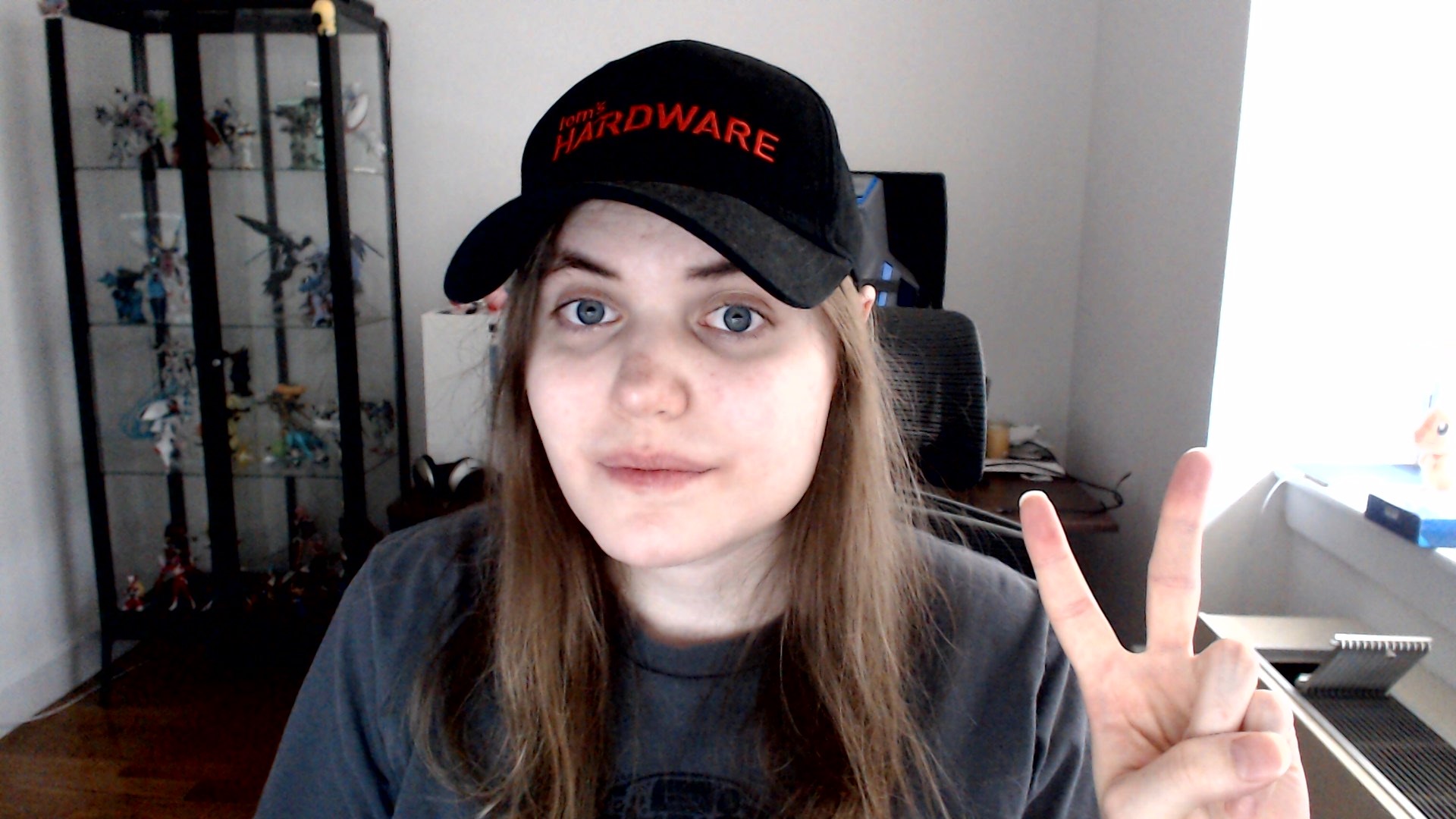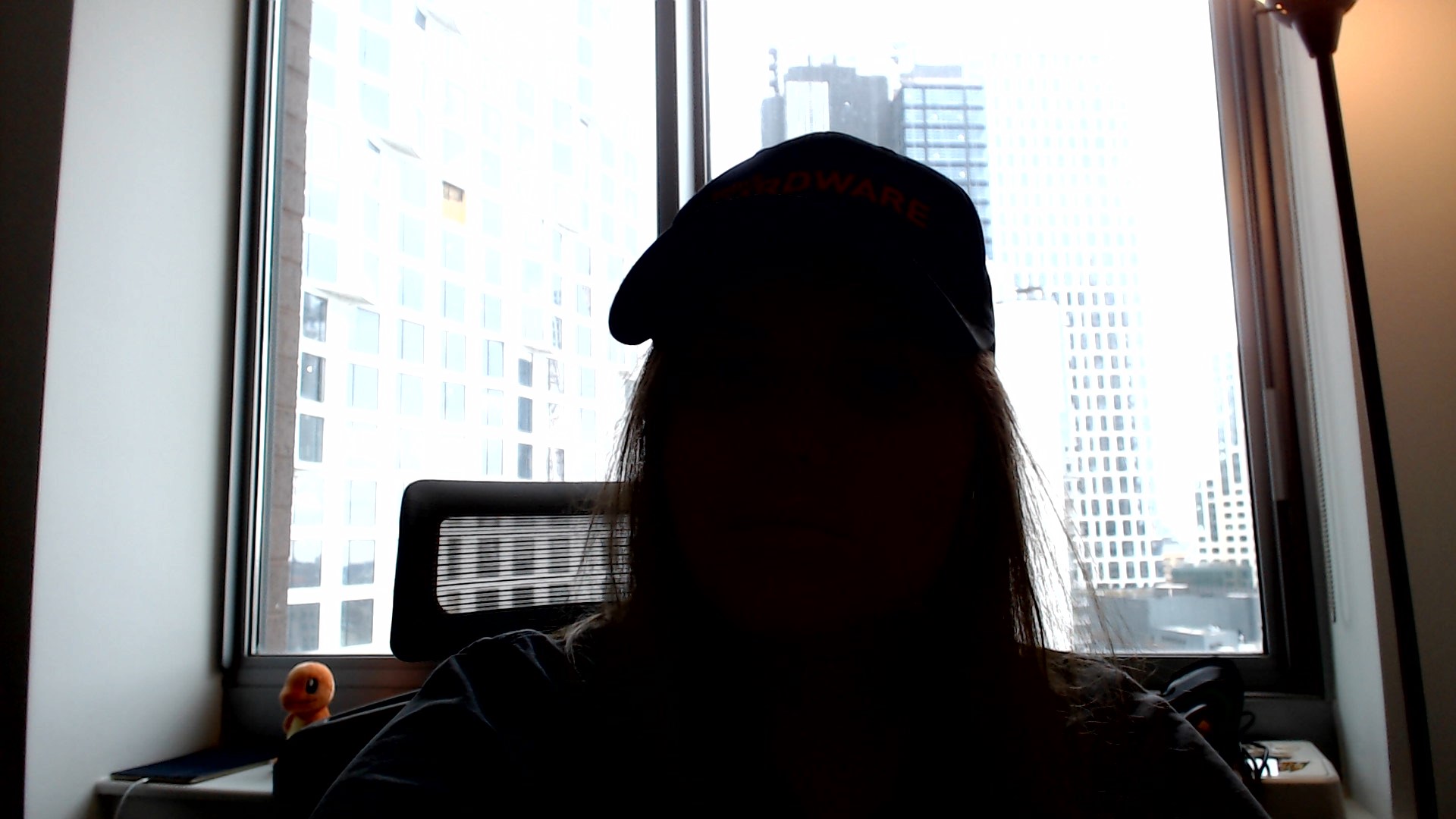Tom's Hardware Verdict
The PTZOptics Webcam 80 is more expensive than the Logitech C920 despite being less usable across different lighting conditions thanks to frequent overexposure.
Pros
- +
Tends to flatter the face with warm color exposure
- +
Wide field of view
Cons
- -
Photos are frequently too sharp
- -
Handles low light poorly
- -
Expensive
Why you can trust Tom's Hardware
Before the holiday season struck, we felt confident saying that we had been through the worst of the webcam shortage. Major retailers were once again starting to reliably carry big names like Logitech and Razer without marking them up, and eBay price gouging had considerably fallen. But as vaccine shipments are getting delayed and lockdown looks to be stretching out further into the new year, the camera situation is more uneven. It’s not quite as bad as it was in early 2020, but even a year later, whether or not the best webcams will be available depends on the day you’re looking.
For instance, during the writing of this review, we were able to find our favorite webcam, the Logitech C920, for its original price of $79.99 both directly from Logitech and from third-party sellers, but that didn’t hold true just a few days before, and we can’t confidently say it’ll be the case a few days after.
With that in mind, we’ve decided to start doing individual reviews for certain standout webcam competitors from brands you might not have heard of. Today’s entrant is the PTZOptics Webcam 80, a Logitech C920-like from a mounted live streaming camera maker that aims to fill the hole left by the gold standard- both in capability and in price.
Both the Logitech C920 and the PTZOptics Webcam 80 shoot in 1080p at 30 fps, connect over USB, and have built-in stereo microphones. They also both use autofocus, with the Logitech C920 having a 3.67mm focal length and the PTZ Optics topping out at 3.5mm. Their fields of view are also similar, with the C920 capturing 78 degrees of the space in front of it and the PTZ Optics Webcam upping that to 80 degrees.
On paper, then, these two cameras would seem to be almost identical. And that’s probably how PTZ Optics is looking to justify the Webcam 80’s $89.00 price tag. But video quality is still largely subjective, as factors like color accuracy and lighting are still difficult to determine from numbers alone. Despite being more widely available, does the PTZ Optics webcam deserve its price, which is $10 more than the category-leading C920?
To test this out, I took photos in normal, low and extreme light with both webcams, as well as recorded myself talking to test the microphones.
Logitech C920


PTZOptics Webcam 80


In normal lighting conditions, with my curtains up and my lamp on, both cameras performed admirably, and the difference was largely a matter of taste. In general, the PTZ Optics webcam seemed to have a higher exposure, which emphasized darker colors, while the Logitech webcam rendered me with a paler appearance. I can say from real-life experience that the pale skin tone is probably more accurate, though I don’t mind the artificial tan from the PTZ Optics webcam.
That said, that same emphasis on dark colors leaves certain objects, like shadows in my hair or on my eyebrows, looking artificially intense in a less pleasing and more distracting manner. I also had difficulty getting consistent results with the autofocus, which meant longer waits in between shots as the camera adjusted and more shots that ended up being too out-of-focus to use. Given that many webcam users are using them to telecommute, that lack of convenience is a serious problem.
However, the PTZ Optics webcam’s slightly larger field of view generally looks more pleasing to me, making my office look less cramped while still keeping the focus on me. Also, while it arguably showed my face in less detail, it tended to capture background elements with more accuracy than the C920. But given that most people use webcams for video calling, it’s questionable if that tradeoff is worth it.
Logitech C920


PTZOptics Webcam 80


Low light is where the PTZ Optics webcam really suffered. When I closed my blinds and turned off the lamp next to my desk, the harsher accents that I mentioned before became bold, artificial lines that surrounded pretty much everything in my photos. This gave my selfies a comic book style look that might be cool if I didn’t mostly use my webcam to talk to my coworkers.
Get Tom's Hardware's best news and in-depth reviews, straight to your inbox.
That said, the warm colors it gave my face were flattering, if inaccurate, though I could do without the emphasis the camera put on every single one of my many flyaways.
The Logitech C920, to be fair, wasn’t perfect. Reducing lighting sources left the selfies it took appearing a little out-of-focus, and the reflection from my monitor seemed to be emphasized on my face to make me look even paler than usual. That said, this still comes across as more true-to-life and less distracting than the harsh bold accents I got from the PTZ Optics webcam. At least my flyaways are a little harder to see.
Logitech C920
PTZOptics Webcam 80
In extreme lighting conditions, facing directly at my window with my lamp on in the background, both webcams were essentially useless. While the PTZ Optics webcam was able to make out more of my face than the C920, it wasn’t enough to make it usable under this light, leaving me looking like I had been collaged together from various newspaper clippings. I actually prefer the shadowy, silhouetted appearance from the C920 shots here, which are at least more honest with the camera’s capabilities. As a bonus, the C920 also captured more of the city behind me.
Walking away from my photoshoot, I felt like the C920 was more usable in more situations, though I have to admit that some of the PTZ Optics selfies were more flattering. For PC webcams, though, I’m not exactly looking for glamour shoots, and having to pay $10 extra for a less versatile webcam with a more finicky focus and exposure isn’t what I’m looking for when I just want to attend video calls.
But does the PTZ Optics webcam make up for its shortcomings with any bonus features? Sadly, not really. While some off-brand webcams like to add in included tripods or even silly face swap software to make themselves more appealing than the standard names, the PTZ Optics Webcam 80 takes a more basic approach.
It attaches to your monitor via an arm with a tripod slot in the bottom, and you can tilt it downwards but not upwards. It also can’t rotate, though it does come with an attached cover for the camera. That’s convenient, but given that most webcams also have lights that indicate when they’re recording (the PTZ Optics webcam has one of these as well), it’s not absolutely necessary.
Ausdom’s C920 competitors, meanwhile, all rotate 360 degrees and can mostly tilt upwards.
Also disappointing here is the cord length. While the Logitech C920’s greater than 5 ft cable means I’m easily able to thread it around the back of my desk to anywhere I want on my tower, the PTZOptics webcam has a shorter, 4.7 foot cable. That’s not a huge difference, but it’s just short enough to make cable management a bit of a pain. I can reach my desktop’s back I/O just fine, but it won’t easily stretch around to my front ports.
And as you might have noticed from my photos, much of the webcam’s surface is reflective and the whole thing loves to attract dust.
The PTZOptics microphone also isn’t too impressive, though neither is the Logitech C920’s ’s. The key difference here is in volume versus quality. The Logitech camera is, in general, louder and buzzier, while the PTZOptics microphone is quieter and clearer. However, despite the lack of background buzz, the PTZOptics microphone also has a distracting echo effect to it that the C920 lacks.
So is the PTZOptics Webcam 80 worth it? If it were maybe $20 to $30 cheaper, we’d easily say yes. But, given that the PTZ Optics Webcam 80 comes in at $89 versus the Logitech C920’s usual $79, it’s at a disadvantage. And while its extra exposure can be useful in certain situations, it’s generally less versatile than the C920, especially for casual telecommuting. However, if you find Logitech’s camera unavailable, the PTZ Optics Webcam 80 is a serviceable, though pricey, alternative.
Michelle Ehrhardt is an editor at Tom's Hardware. She's been following tech since her family got a Gateway running Windows 95, and is now on her third custom-built system. Her work has been published in publications like Paste, The Atlantic, and Kill Screen, just to name a few. She also holds a master's degree in game design from NYU.




